Nagoya Castle/名古屋城(Aichi)
About Nagoya Castle
The icon of Nagoya is without a doubt Nagoya Castle (Nagoya-jo), which was built by Tokugawa Ieyasu after the Battle of Sekigahara in the year 1600. This castle, intended as the residence of the Owari Tokugawa family to prepare for the threat of the Toyotomi Clan based at Osaka Castle after the Battle of Sekigahara, was made by harnessing the most advanced technologies of the era, and features a massive keep, a majestic Honmaru Goten (main castle), and expansive Ninomaru Garden, as well as many more amazing features. After its completion, it flourished as the residence of the Owari-Tokugawa family for over two and a half centuries. Nagoya Castle is considered one of Japan’s Three Famous Castles.
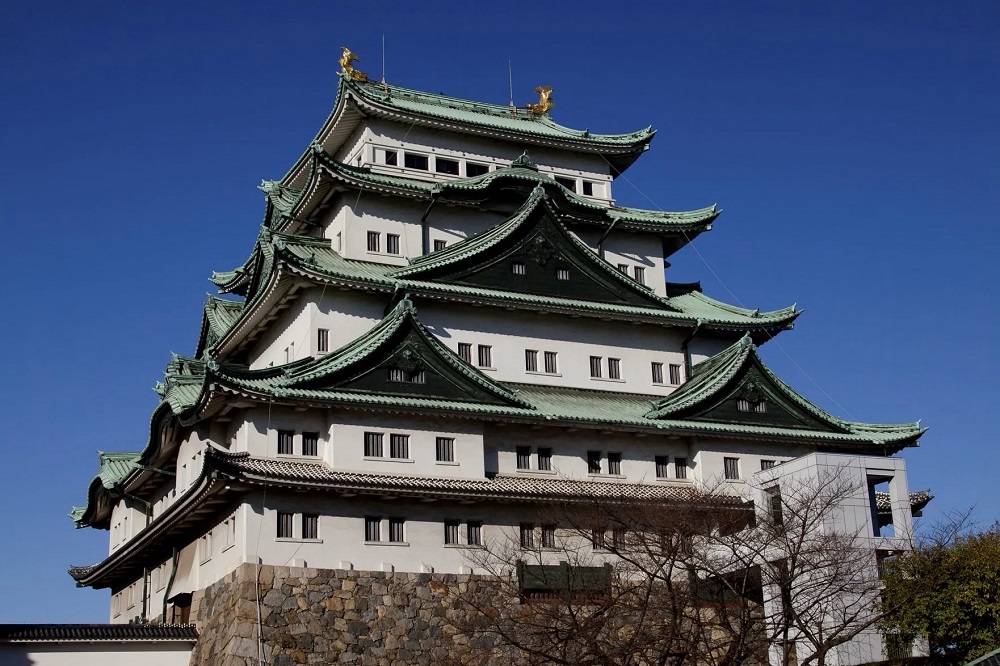
©名古屋城総合事務所
By far, Nagoya Castle’s most prominent features are the male and female golden 'Shachi' (mystical fish-like creatures) adorning the north and south peaks of the main keep, respectively. The male shachi is larger than the female, while the female shachi is made with a more generous coating of gold, making it a bedazzling spectacle to behold.
The chessboard-like layout of the old town that was built at the same time as the castle served as the blueprint for present-day Nagoya.
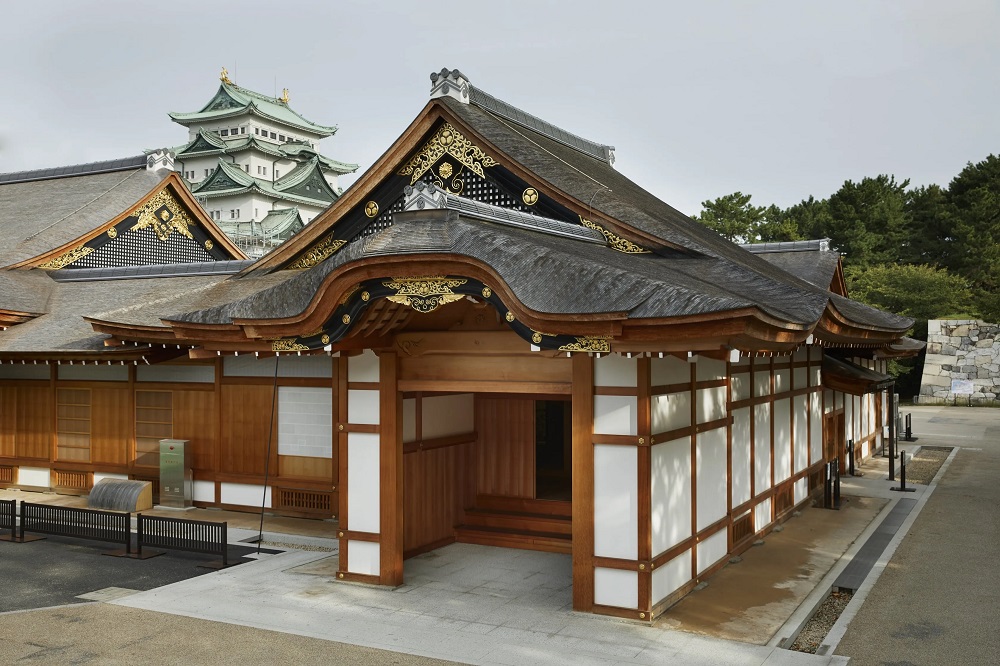
©名古屋城総合事務所
In 1930, Nagoya Rikyu (imperial villa) was bestowed on Nagoya City by the Ministry of the Imperial Household and the following year the castle was opened to the public—soon becoming a familiar symbol of Nagoya among locals. However, Nagoya was subjected to heavy bombing in 1945 during World War 2 and Nagoya Castle did not go unscathed; with its keeps, Honmaru Goten, and other major structures destroyed. After the war, there was a strong push from the public to reconstruct Nagoya Castle, and work with this goal commenced in 1959. Restoration efforts began on the main palace in 2009 and were completed in 2018. The second generation pair of shachi currently perches atop the castle keep.

©名古屋城総合事務所
Getting there and around
From Nagoya Station To Nagoya Castle
Subway
Get off at the "Shiyakusho (City Hall)" or M07 stop of the Meijo Line.
Get off at the "Sengencho" or T05 stop of the Tsurumai Line.
Train
Get off at the "Higashi-ote" stop of the Meitetsu Seto Line
Bus
Get off at the "Nagoyajo Seimon-Mae" stop of Sakae No. 13.
Take a Nagoya Sightseeing Route Bus called "Me-guru".
Get off at the "Shiyakusho" stop of the Key Route Bus No. 2.
Top Tip
Honmarugoten/本丸御殿
Honmaru Goten is the residence of the castle lord and the place where political affairs are conducted. The interior of Nagoya Castle’s Honmaru Goten, completed in 1615, is majestically decorated to the extent it is praised as a "masterpiece of early modern Period castles." However, this exquisite work of art was lost in air raids during WW2 in 1945, and although many longed for its restoration over the years, it wasn’t until 2018 that it was faithfully restored based on literary works, photographs, and surveyed maps from the Edo Period. Today, this masterpiece is open to the public to behold in all its wonder.
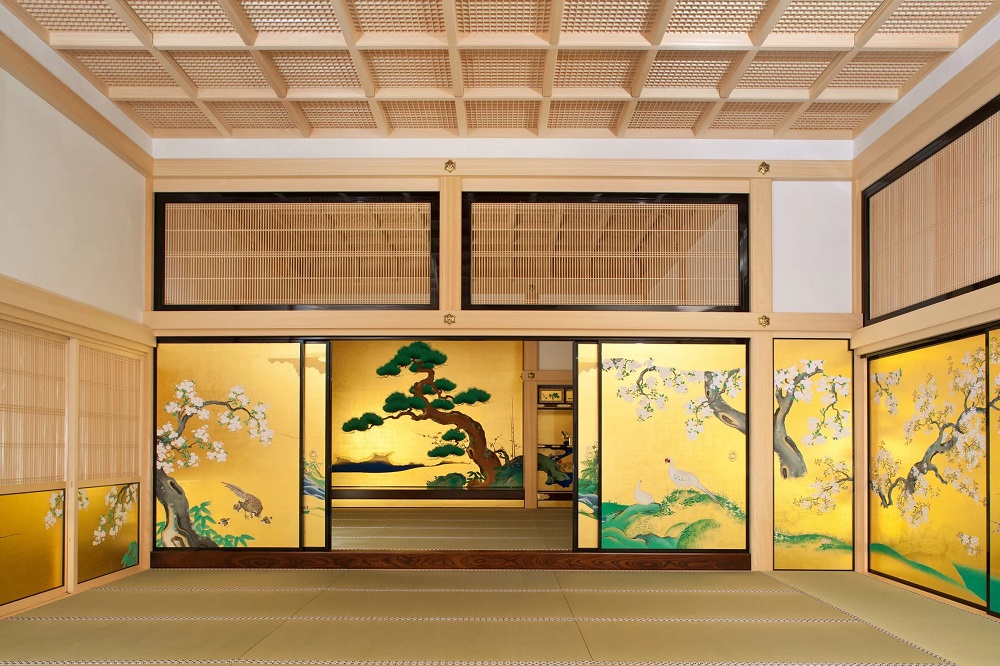
©名古屋城総合事務所
Ninomaruteien/二之丸庭園
Ninomaru Garden is a vast garden area established on the north side of Nagoya Castle’s Ninomaru Goten, and boasts Japan’s largest garden of a castle in which a castle lord actually resided. Ninomaru Garden comprises north, front, and east gardens, a stone bridge spanning a rock arrangement resembling a waterfall, masonry reminiscent of a valley, and numerous other dynamic expressions which have earned it a strong reputation as one of Japan’s most beautiful gardens.
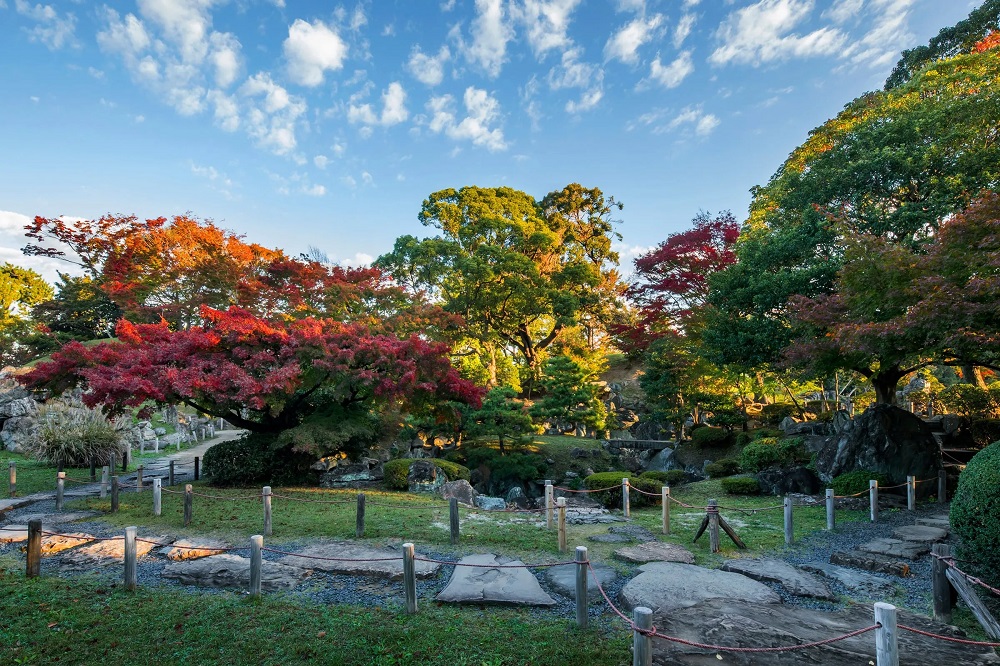
©名古屋城総合事務所
Nishinomaru Okurajohokan/西の丸御蔵城宝館
The Nishinomaru Okura Museum is a facility that exhibits and stores historical artifacts in a structure resembling the buildings that used to serve as the third and fourth storehouses of a total of six storehouses that once existed in the grounds. In the Historical Information Room introducing the history of Nagoya Castle, and the Exhibition Room, which displays precious artifacts of Nagoya Castle, including the wall mural of Honmaru Goten which has been declared a national treasure, visitors can gain in-depth knowledge on Nagoya Castle.
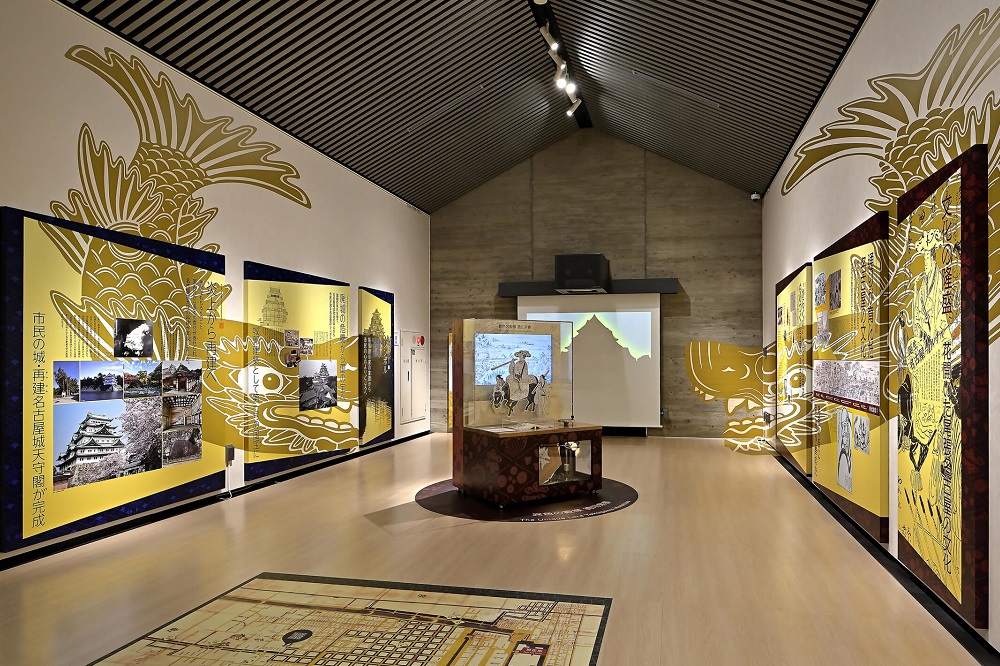
©名古屋城総合事務所
Place famous for cherry blossoms
Nagoya Castle is the city's most famous Sakura (cherry blossom) landmark. and the seemingly-infinite number of blooming cherry blossoms coupled with the grandeur of the castle is indeed a breathtaking sight to behold. From late March every year, no less than a thousand Sakura trees, including the signature Somei-Yoshino and Shidare-Zakura, bloom and reach the height of their beauty. A Sakura Festival is held at this time of year, complete with a light display to set the pink sea of flowers aglow at night. This enchanting scene of Nagoya Castle surrounded by charming Sakura blossoms at night can only be seen at this time of the year, so if you’re in town, be sure not to miss it!
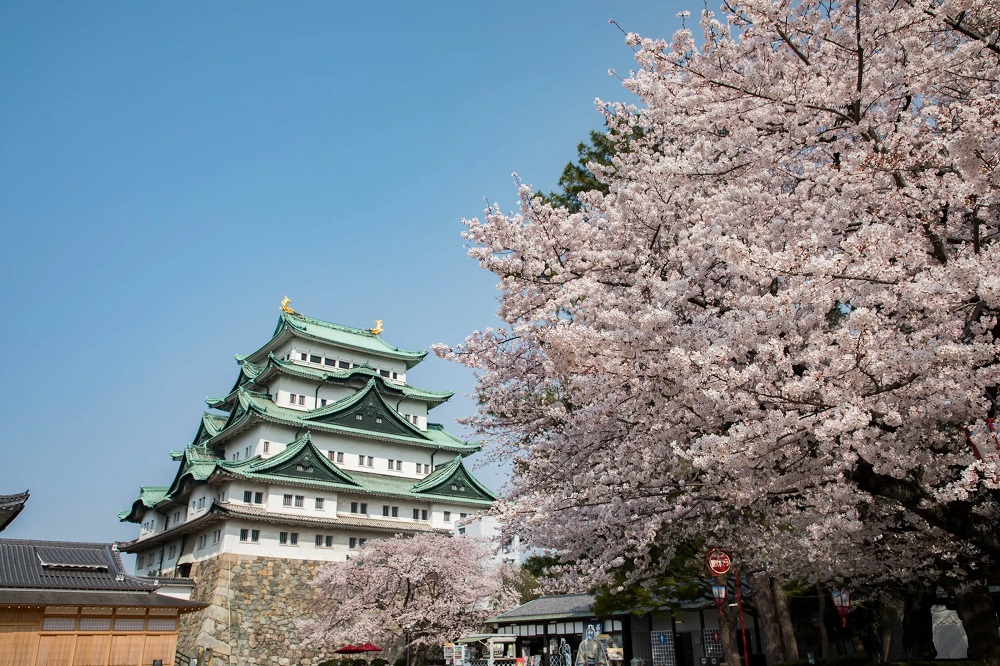
©名古屋城総合事務所
Places to see autumn leaves
A visit to Nagoya Castle in autumn simply isn’t complete without a tour of the autumn leaves. The prime time to appreciate this unforgettable sight is around mid-November, when the exquisite Ninomaru Garden and tea house area seemingly transform into a canvass painted with a myriad of crimson red and golden leaves as the autumn days grow cooler. Meijo Park, which is located adjacent to Nagoya Castle, is also famous for its autumn leaves, and here visitors can enjoy a leisurely stroll while appreciating the beautiful leaves of the Chinese tallow, Japanese elm, Sakura trees, and many more species.
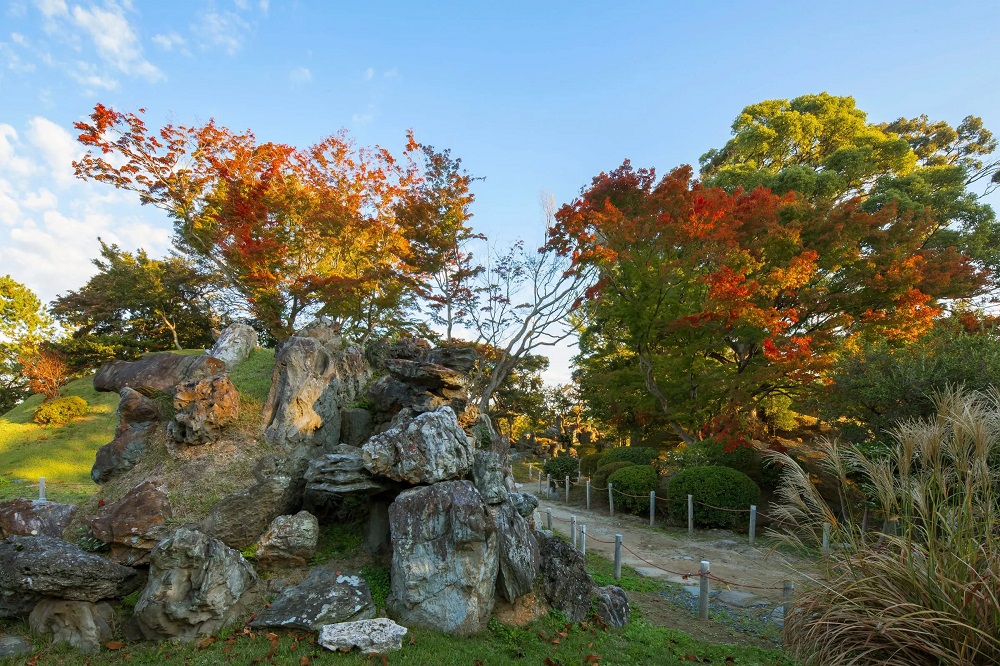
©名古屋城総合事務所
Unique Local Experiences
Hori River is a man-made canal flowing through Nagoya which was excavated by samurai retainer, Fukushima Masanori, as a route to ferry the stone and timber used to build Nagoya Castle. Originally there was no river for ships to pass through the city, so Fukushima gathered a sizeable workforce to carry out the task of connecting Nagoya Castle to the seashore in Atsuta ward. Upon Hori River’s completion, it became possible to transport the goods the townspeople needed for everyday life and significantly contributed to the vitalization of the region as well as the advancement of monozukuri (making of things) industries. A statue of Fukushima Masanori was erected on the bank of Hori River in honor of his achievements.
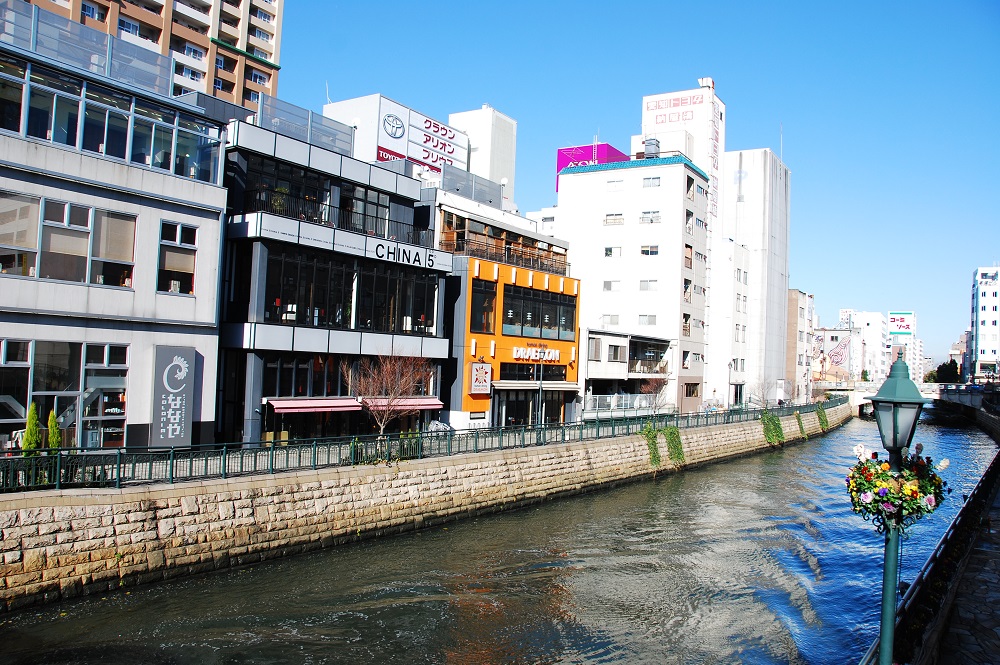
©(公財)名古屋観光コンベンションビュロー
Travel Advice and Tips
Located in the heart of the city, Nagoya Castle can also be reached by a leisurely walk from Nagoya Station. Along the way (approx. 2.5 km), visitors can take in more of Nagoya’s history as they pass through notable landmarks such as Shikemichi, where much of the old town is preserved, and Endoji Shotengai (Endoji Shopping Street), said to be one of the oldest shopping streets in the city. Moreover, this path will take you along Hori River, the canal that played a key role in Nagoya Castle’s construction and majorly contributed to Nagoya’s development. No doubt strolling along this significant waterway as you head for the castle will be an intriguing way to get to know the city better.
Near the Main and East Gates of Nagoya Castle is Kinshachi Yokocho (Yoshinao Zone and Muneharu Zone), and here you can find traditional gourmet food representing Nagoya as well as experience the city's new food culture.
Accommodations
ANA Crowne Plaza Hotel Grand Court NAGOYA/ANAクラウンプラザホテルグランコート名古屋(Aichi)
1-1-1 Kanayama-cho, Naka-ku, Nagoya, Aichi
ANA Crowne Plaza Hotel Grand Court NAGOYA is situated just a short stroll from Kanayama Station, Aichi Prefecture's second busiest hub after Nagoya Station. The hotel is conveniently located just 5 minutes from Nagoya Station by train and 8 minutes f....

